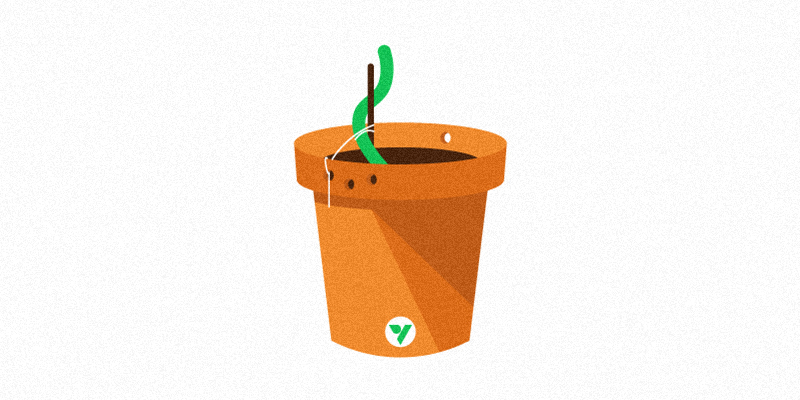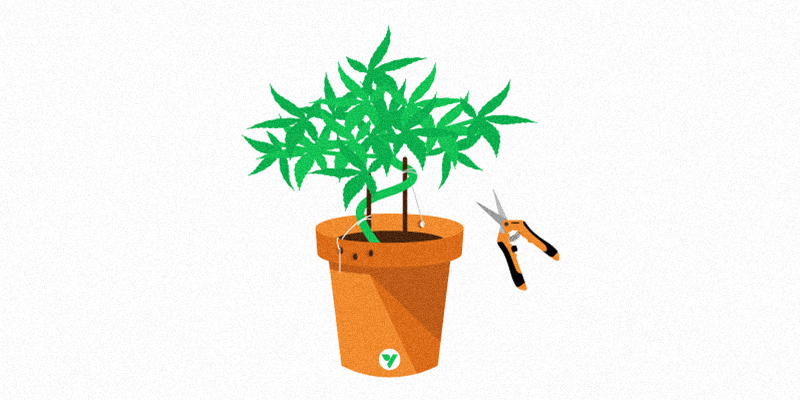Bonsai is the art of potting trees and plants and maintaining them at a small size; the art originated in ancient China and has prevailed in Japan; it has thousands of years of history. The word “bonsai” means “planted in a container,” which is surprisingly understated for how difficult it actually is. Growing a mature plant in a small container requires developing a strong root system and plenty of nutrients throughout the life of your plant (and depending on the plant it could be a very long time). Grow Marijuana Bonsai has become a popular pastime but also can have some unique results when growing buds and flowers. In fact, farmers grow hemp in small containers to generate the genes needed for various clones and since hemp bonsai occupies a small footprint and takes up very few resources, it is no different from a regular hemp plant except for its size. If you have only a little room to grow, bonsai cannabis can save you precious space. In larger gardens, bonsai cannabis comes into play even more, since with just a few pots of bonsai cannabis mothers you can provide your garden with a variety of stable and powerful genes without taking up any space.
How to set up your own bonsai cannabis
Preparing the pot

Choose a pot with the size you want. Because the cultivation of bonsai cannabis requires training, you will need to drill a lot of holes into the sides of the pot. Drill holes that are small enough just to pass a wire through easily—you’ll use this wire to tie and restrain your plant as it grows.
Trunk training

In order to prepare a healthy mother plant for your cannabis, we need to train your mother plant properly in order to have your clones grow large and healthy. We’ll do this by restraining your bonsai cannabis to a stake. Insert a stake next to your plant. This stake can help you orient your trunk in any direction and give your cannabis plant a bit of a bonsai look if you’d like. Gently press the stake into the dirt, being careful not to damage the roots. Next, thread your wire and twine through the holes you drilled earlier and secure the trunk to the stake. As you twist the twine around the trunk and the stake, don’t tighten the trunk immediately—instead, over time, tighten it bit by bit. This will help your cannabis take form without overly stressing the plant. You can use this twine to help you create interesting shapes and forms if you like, or you can use it to just restrain the plant.
Training your branches
Training a branch is the same as training a stem, requiring you to thread twine through ahole in the pot and tie your branch in the direction you want. If you want them to grow more horizontally, you’ll need to tie them tighter, if you want them to grow vertically, tie them looser. Leave some space between the twine or wireand the branches to allow the plants to grow, twisting and forming the branches over time. Over time you may be able to remove the wire but usually, for some time, this wire will be required to hold the shape of your plant.
Pruning

The next step is pruning, which is a very important step in bonsai. As our plants grow, you need to prune them regularly to keep them small and in shape. Trimming off overly dense branches with a hand pruner will also help air circulation near the main stem, preventing your bonsai from getting too wet and developing mold. Trimming also allows you to take cuttings and create clones, but it is a crucial point for bonsai because it helps control the growth and size of the plant. Trim away parts of the plant that might be crowding other parts or that would grow out of control later on. After you’ve trimmed your bonsai to the shape you want, all you need to do next is to cut off the newly grown branches to ensure the plant stays small.
Harvest
While this bonsai marijuana won’t get a great yield, you still need to harvest it because. As usual, harvest them when the buds turn milky, then dry and cure them. How to keep your cannabis bonsai alive after harvest? Cut off the top 1/3 (where the big shoots are) and prune the middle of the plant heavily, especially the yellow leaves, leaving the bottom untreated. After that, re-enter your cannabis into the vegetative stage and with18+ hours of light. Repeated cycles like this will make your cannabis bonsai more beautiful, and while the buds will be less potent, setting up a cannabis bonsai is not designed to maximize the potency of the buds.
Can we get clones from bonsai indefinitely? In theory this can be done as long as the plant is not dead. But in reality, your cannabis plant will slowly degrade over time. Pure Indica has the fastest degradation rate and pure Sativa has the longest lifespan. To keep the plants in your garden high quality, replace Indicas every 3-4 years, hybrids every 4-5 years, and Sativas every 5-6 years. Of course, this time is also related to the treatment they received throughout their lives.
Wrap-up
The main training method used to set up a bonsai cannabis for yourself is low-stress training. When tying and bending the main stem of the branches to make them grow in the direction we want pay attention to how the plant reacts—sometimes you may accidentally apply too much force and potentially fatally damage the plant, so be careful when trying to turn your cannabis into a bonsai. Nonetheless, not only does the art of bonsai provide you with a steady stream of clones, the Zen philosophy contained in it makes it even more serene.
For more growing related knowledge please subscribe to our newsletter!
And join our Facebook farmer’s community for even more exclusive contests and prizes!
Now VIVOSUN App is online! Download and explore more!






